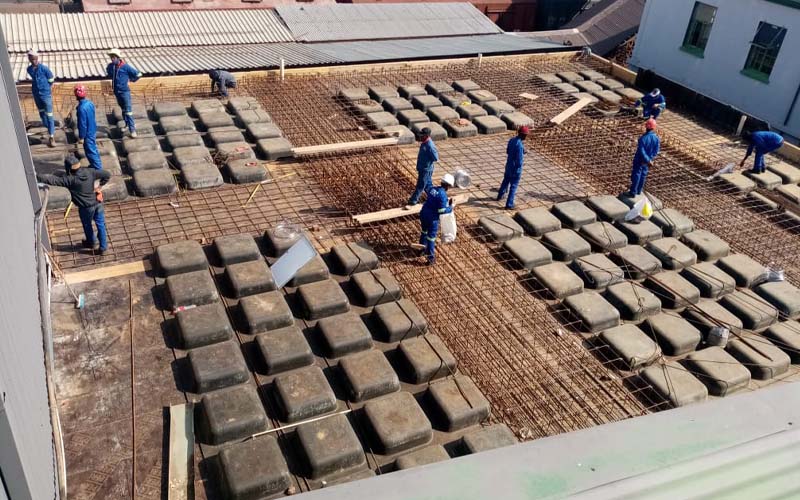Dec . 11, 2024 03:17 Back to list
Formwork Solutions for Efficient Concrete Beam Production in Industrial Facilities
Formwork for Concrete Beam Manufacturing Enhancing Efficiency and Quality
Concrete beams are essential structural elements in modern construction, providing the necessary support for various load-bearing requirements. The production of these beams relies heavily on the formwork used during the casting process. Formwork serves as a mold for poured concrete, and its design, construction, and maintenance play crucial roles in determining the quality, durability, and efficiency of concrete beam manufacturing.
Understanding Formwork
Formwork can be defined as a temporary or permanent mold into which concrete is poured to shape the final structure. In the context of concrete beam production, formwork must be tailored to meet the specific requirements of the beam design. This includes considerations for the width, height, length, and any specific features such as drainage channels or reinforcement inserts. Effective formwork not only defines the shape of the concrete but also supports the weight of the concrete until it cures.
Types of Formwork
Several types of formwork are employed in the construction of concrete beams. The most common types include
1. Traditional Timber Formwork Often made from plywood or timber, this type is commonly used due to its accessibility and cost-effectiveness. However, it has a shorter lifespan and may lead to inconsistencies in the surface finish.
2. Metal Formwork Used for its durability and reusability, metal formwork can be precisely manufactured, resulting in better surface finishes. It is especially beneficial for mass production in factories, though it is typically more expensive than timber.
3. Plastic Formwork Lightweight and easy to assemble, plastic formwork is an emerging option. It offers good durability and can be reused multiple times, though it may not be as strong as metal options.
4. Panelized Formwork This system uses large panels that can be easily adjusted to create various shapes and sizes, making it suitable for complex beam designs. It enhances efficiency as it minimizes the time needed for assembly and disassembly.
formwork for concrete beam factory

Key Considerations in Designing Formwork
1. Load-Bearing Capacity The formwork must adequately support the weight of the wet concrete. This requires careful assessment of load distribution and reinforcement placement.
2. Surface Finish The quality of the finished concrete surface is greatly influenced by the formwork material and design. Smooth, well-finished formwork results in minimal surface imperfections and lower finishing costs.
3. Ease of Assembly and Disassembly Efficient production relies on quick formwork setup and teardown. Systems that allow for rapid assembly can significantly reduce labor costs and project timelines.
4. Reusability Investing in durable formwork that can be reused for multiple casts is a cost-effective strategy. It minimizes waste and reduces the need for continuous investment in new materials.
Innovations in Formwork Technology
The concrete industry has seen considerable advancements in formwork technology in recent years. Innovations such as the use of computer-aided design (CAD) have improved the precision of formwork elements. Advanced materials, such as fiber-reinforced polymers, provide additional strength without the added weight. Moreover, modular and flexible formwork systems are gaining popularity, allowing for a greater variety of beam designs and enhanced adaptability on-site.
Conclusion
The impact of formwork on concrete beam manufacturing cannot be overstated. It is not merely a mold but a critical component that influences the overall quality, speed of production, and cost-effectiveness of beam construction. As the construction industry continues to evolve, embracing new technologies and practices in formwork design and implementation will be essential for manufacturers aiming to enhance their competitiveness and meet the demands of modern engineering projects.
By focusing on high-quality formwork systems, companies can improve the structural integrity of their concrete beams, reduce production costs, and deliver projects that meet stringent quality standards—a win-win for manufacturers and clients alike.
-
High-Quality U Head Jack Scaffolding – Reliable Scaffolding Jack Head Manufacturer & Factory
NewsJul.08,2025
-
High-Quality I Beam H20 Leading Timber Beam H20 Material Factory, Exporters & Manufacturers
NewsJul.08,2025
-
High-Quality Powder Coating Steel Formwork - Durable & Corrosion Resistant Solutions
NewsJul.07,2025
-
Inclined Column Formwork Supplier – Durable & Precise Solutions for Unique Structures
NewsJul.07,2025
-
High-Quality Water Stop Solutions Trusted Water Stop Company & Suppliers
NewsJul.07,2025
-
High-Quality Formwork Material Supplier Reliable Manufacturer & Factory Solutions
NewsJul.06,2025